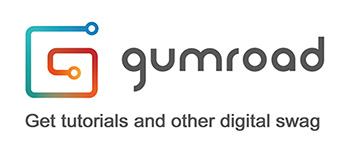I must say that I´m still learning the right usage myself, and i´m not perfect in teaching things.
For this howto, I assume that those interested, are familiar with where to find the brush-tool in PS and how to use a Wacom tablet.
I also link to a lot other resource sites, check these out and you have comprehensive resources about brush work in Photoshop.
I have also seen people asking in forums :
But what are the basics, the foundations in CG- art and digital painting?
Well, lets make it clear, digital painting is hard work, though easier than to use a physical airbrush, but more difficult than oilpainting, just to clear things up right from the start!
I was taught physical airbrush in study, and I can say bringing a color to a ground that is immediately dry is a tough medium to learn, nothing can be undone, there is no ctrl-z if the color is applied, its applied.
Oilpainting in comparison is an airing, one can throw in some color, wait a day or two and change things later a layer on top...sorry to dissapoint the fine-artists here, but Oilpainting is easy compared to physical airbrushing with acrylics.
Digital painting can be classified right between these two disciplines.
To master either the digital or the traditional way, one need to learn the basics, which means Pencils, Pencils, Pencils!
I don´t will even speak about the composition
The technique used, is a technique used, not more not less - may it be digital, traditional, mixed media or whatsoever, so the basics are fundamental to every artist!
There are a lot tutorials on brushes, walkthroughs and what not, but lets face it: if you are not able to bring a simple idea to paper, you need to learn the basics -period.
 Before even thinking about holding a Wacom pen, one should know how to use the Pencil right, you should be capable to do outlining and shading as also a crosshatch gradient right, like this:
Before even thinking about holding a Wacom pen, one should know how to use the Pencil right, you should be capable to do outlining and shading as also a crosshatch gradient right, like this:If you´re stuck at this, try to see this as example, it should not take more than 10 minutes to draw this sheet freehand without overdrawing the boxes and without a need for an eraser!
A lot people have problems drawing a really round circle freehand and without technical help, which as a fact, is quite scary!
Master the crosshatch and Wacom is your friend!
If this is no problem for you, you can read on.
Man versus machine
Digitally this is no problem, create a circular selection, fill it with a sphere-gradient and you have the below thing done in about 10 seconds. Wrong!
That´s not digital painting and everyone can tell the difference between a digitally calculated fill algorithm and a hand-painted sphere.
You can make this experiment yourself, make a circular selection and paint in it like above and use the smudge to work it out like painting with oils and do the same with a gradient fill, the difference is like "human" versus "machine".
Below is an introduction to an outliner-ink brush and a fill brush that can be compared to a bristle brush from Corel Painter.
I found this particular from a package which Dan Luvisi has put online for free download, I can only encourage to load this package as it is full with great brushes for clouds and skin-textures as well! Play with the configurations in the brushes settings to get the most out of this brush(es):
The eye above is drawn with only the outliner to show how versatile it is. The mountain example shows a nice usage for the texturized bristle brush.
The fundamentals in working digitally contrary to traditionally is, unless you work on a cintix tablet, the different hand / eye coordination (painting here,looking there) practice can take up to mere years until drawing is fun again.
Also digital painting consists of 3 important parameters which constantly want to be controlled from the artist:
- pen pressure / sensitivity (hardware and software)
- transperency and flow
- color and layer affection
My typical brushes for everyday use can be count on one hand.
Occasionally some projects require custom brushes, here you find out how to do custom brushes in Photoshop
There are some important tips that should help making the digital painting practice easier:
- Make a shortcut for strg+alt+z to F1 for example and set the "step back number" as high as possible
- Work every new object on a new layer
- begin every piece with 72dpi and later add more resolution(150dpi/300dpi) when more detail is added.
- Learn all important shortcuts from photoshop
- Use the eyedropper-tool for quick colorchanges
- Save very often and different versions
- Never use filters except for some Gaussian blur or sharpen
- start either from dark to bright or from bright to dark
- Never use black for shadows
- Smudge or brush tool use with 60-70% pressure and 90% flow
- Learn from the old masters
Better you master one brush in Photoshop and know how to use it right, instead having 100 and not knowing how to handle one.
This should lead to a keen observation of your brush and put in question if you could do 80-100% of your work with this one brush alone.
The myth about the evil smudge tool
I will also make some points clear about the smudge tool, it is a sword with two edges:
Used right, the smudge can lead to a feel and results, comparable to oilpainting, Charcoal or even Watercolor, but if used wrong it eats just resources and the results looks plain and obvious.
The smudge can also be a bitch: when used without spacing, it is direction sensitive, which means smudging to the left makes the basic color brighter, smudging to the right makes the basic color darker. smudging with 50% pressure allows perfect gradients, while 85% pressure produces hard/Watercolor like edges.
It should only be used to spread a basic paint.
I had an art teacher who told us students to rather invest 150 bucks in one great brush, than in 10 cheap ones, so I guess Photoshop is an expensive brush, but the message comes through, pick one favorite and stick with it and it can do magic for you !
This sheet shows the use of my favorite brush (a standard one used as brush and smudge).
When picking a favorite brush its important that this brush is versatile as possible, has no generic feel and this must not always be a custom brushes.
Now experiment for yourself and try a quick "from life-drawing" like I did below:
Looks everything but generic, ain´t it?
This blog post should just give an insight on how digital painting can be used, brush settings are subject to everyone´s own experimentation, many ways lead to Rome!
I spare people the exact settings because these are irrelevant, but all important thoughts are in this post, pick the information right, study and master them and results like this should be no problem:
Last but not least, here are some helpful links, tutorials and videos that helped me -though it cannot replace the experimentation, go forth and explore:
- Don Dos Santos Warbreaker Illu -process (check also other Massive black´s dvd´s)
- Diane Özdamars painting-process(Check her channel for more parts)
- The Artcenter-blog / helpful resources from industry professionals
- The CGtalk-forums huge database
- DomenLo´s tutorial-page archive
- ConceptArt forums are not to miss
If this was helpful, (or not) a comment would help me to keep on doing some more howto stuff in the future.






















Really nice tutorial, thanks for sharing.
ReplyDeletegreat tutorial.I always tell people, the less you remind yourself you're painting with a computer, the better results you will have.Still, i suggest beginners to first grab a pencil (and then a real brush) and try out some stuff with traditional media, to get ahold of the basics of painting/drawing (just like you suggested in the beginning).Many people skip that part but, once done, it will change their life with photoshop
ReplyDeleteVery good basic tutorial for someone like me who was an airbrush artist in the 70s/80s, now a bristle brush artist, but wanting to get into digital painting.... i can see it will be practice practice practice, but this gives a good bit of confidence to begin. Thanks
ReplyDeletegood
ReplyDelete